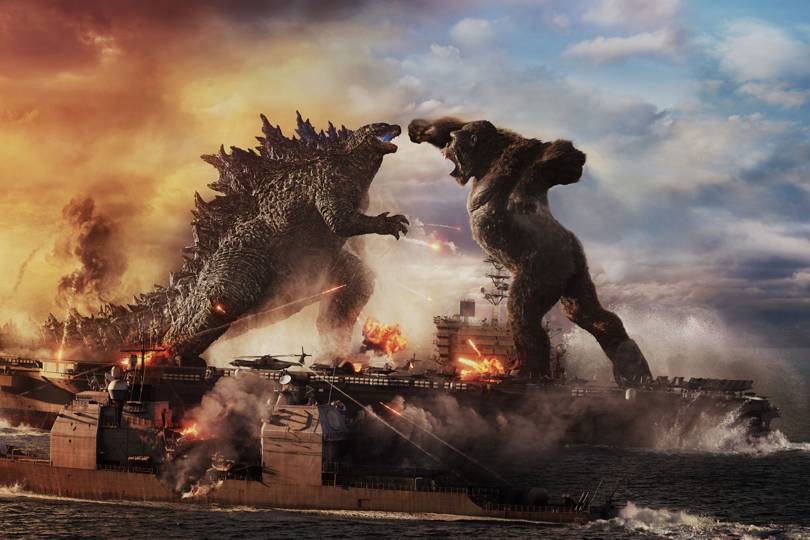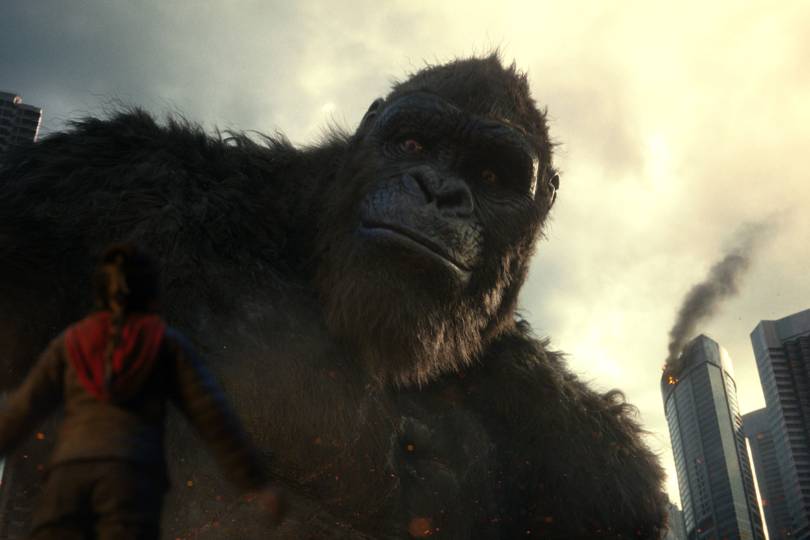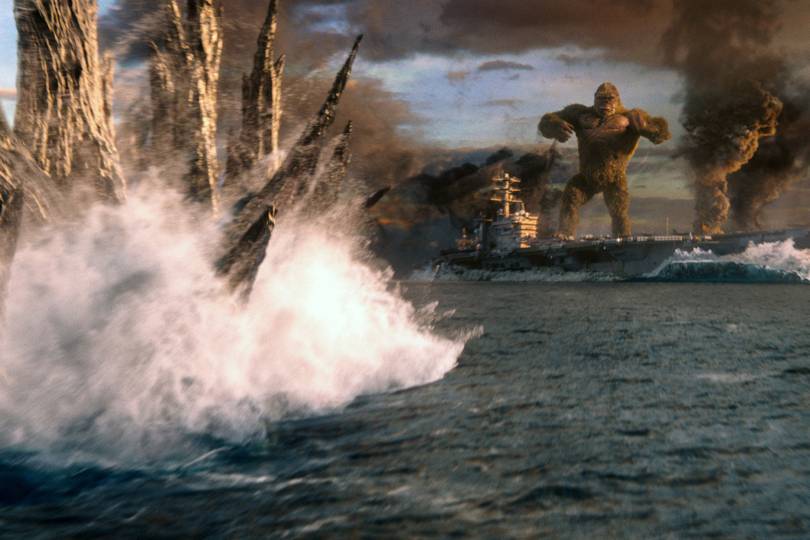Over the years, the size of these monsters has increased, and in the new film "Godzilla vs. Kong" has reached new heights. But could they exist in reality?

When it comes to revealing movie bloopers, it's hard to pass by characters like King Kong and Godzilla. And while they may already be lagging behind the Avengers in popularity, the creatures have definitely earned the long-awaited battle in Godzilla vs. Kong, due out in April.
The most unusual thing about this film is probably not the pointless trailer, where every second something is smashed and broken, but the fact that both characters suddenly underwent explosive growth. Even compared to the relatively recent reboot of Monster Universe, or Legendary Entertainment's MonsterVerse - their shared fictional universe.
The last time the two sorted things out, in 1962, in the Japanese puppet film King Kong vs. Godzilla, Kong was 45 meters tall - compared to just 7.5 meters in Peter Jackson's 2005 film King Kong. years (this is how the audience appreciated his height). In the 2017 film Kong: Skull Island, the primate was already 32m tall - almost four times the size of the current 120m version of Godzilla.
And although, judging by the skeletons of Kong's parents on the Island of Skulls, 30 meters is an approximate genetic maximum for their species, the producers of the franchise got out of it, announcing that Kong was a teenager in that film, and that he still has the opportunity to grow up, becoming a worthy opponent of Godzilla. 40 years later, when the new film takes place.

There is some logic in scaling Kong up to Godzilla. If Godzilla trampled a big monkey in the first minutes, it would be a very short film. But how do you explain that Godzilla has grown from 100 meters in 2014 to 120 meters today? And is there any scientific character in this?
Some things are shown correctly in the film. James Rosindel of the Faculty of Science at Imperial College London points out the existence of the theoretical Kop's Law , according to which the size of individuals tends to increase during the evolutionary development of species. “The bigger you are, the more competitive advantages you have, and often natural selection follows this path,” he explained.
However, larger individuals require more food, and they usually reproduce more slowly, and therefore the same ecosystem can support fewer such individuals. Therefore, it is logical that Kong and Godzilla are the last representatives of their species, and Kong has been slowly maturing for 40 years.
However, this is where the science practically ends. It turns out that the main enemies of Godzilla and Kong will not be each of them for each other - it will be physics. More precisely, the laws of gravity and biomechanics.
The largest living animal today, blue whales , live in the ocean. “The size limitation of aquatic animals is closely related to the ability to absorb enough food to support their voluminous bodies,” explains David Labont, researcher in the Department of Engineering Biology at Imperial College London. Labonte deals specifically with the relationship between physical laws and the size of bodies. For example, why are there no animals heavier than geckos that can climb smooth surfaces upside down?
As for blue whales, Labont says, their huge mouths and filter feeding methods allow them to get enough food to maintain their bodies [a blue whale needs food in the amount of 3-4% of its body weight daily / approx. per.]. Thanks to this, blue whales can grow up to 180 tons in weight (in the last film, Kong weighed 158 tons).
The aquatic environment has other advantages, in particular, buoyancy. One of the main reasons blue whales can grow so large is because the water supports their weight. For the same reason, when whales are thrown onto land, the most common cause of death is internal organ damage from the weight of their own bodies.
It turns out that land animals have to solve the problem of gravity. In this regard, the largest land animal, the African elephant, reaches a relatively short weight of six tons.
“For land animals, gravity is often a key constraint,” Labont explains. - Ideally, you should stand on the bones without breaking them. It may seem like this is not such a serious limitation, but the more you get, the harder it is to do it. The problem is that the ability of bones, like any supporting structure, to resist pressure as it grows in size grows more slowly than what they need to support. "
Labonte says this is practically a textbook example of a scale problem: the strength of a block of material depends on its cross-sectional area, and mass depends on volume. Rosindel's colleague, Samraat Pawar, illustrates this with the well-known example of a man 18 meters tall, coined by British biologist John Burdon Sanderson Haldane . This giant will be ten times taller than a standard human, and ten times wider and thicker. Moreover, his weight will be a thousand times more than that of an ordinary person.
Unfortunately, the cross-sectional area of a giant's bones will be only a hundred times larger than that of an ordinary person, so each square centimeter of a giant's bone will have to support ten times more weight than the bones of a normal person. And since a person's thigh bone breaks under a weight of about ten times that of a person, the giant will break his hips with every step.

So Godzilla and Kong have no chance of making a move without getting multiple cracks in their bones - let alone trampling down entire city blocks.
When asked whether an animal could exist in principle, Labonte says that warm-blooded creatures - such as primates - tend to adapt more easily to their environment than cold-blooded ones, so Kong has a better chance of coping with problems like climate change. than Godzilla.
However, Pavar adds, a cold-blooded animal has no chance of reaching the size of Godzilla at all, as the dinosaurs have already proven. “In fact, Godzilla, with its size, could not be cold-blooded, since an ectothermic animal of this size would not have been able to keep warm only with the help of external energy sources,” he explains. "So the big dinosaurs were at least partially endothermic."
It turns out that it is not themselves who threaten Kong and Godzilla, but their bodies. “The more body you have, the more cells it contains, and the more likely one of them is to fail and develop a cancerous tumor,” explains Rosindel. It remains a mystery how blue whales and African elephants manage to prevent this disease, but Rosindel believes that they evolved to have some kind of genetic protection against cancer. “Such protection must come about as a result of evolution, and it may have to be paid for. Any big creature should solve this problem. "
The largest creature on Earth may be more unusual than Kong and Godzilla together. Easily surpasses in size both the blue whale and the African elephant armillaria solidipes, or dark honeydew. In the Oregon forests, a single organism of this parasitic fungus was found, stretching 5.5 km and weighing in the range from 7,000 to 30,000 tons. And while the title Attack of the Giant Mushroom is unlikely to attract viewers as well as Godzilla vs. Kong, a story like this will certainly be more terrifying and true.